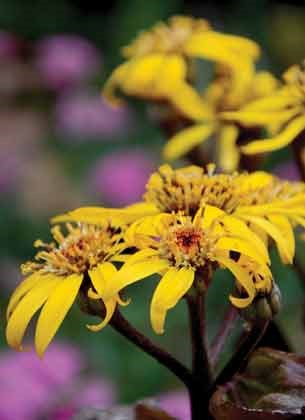AS we sizzle into midsummer, the heat and all that flowering can make many perennials in the garden look a little tired and ragged.
For some plants, the end of flowering does not mean the interest is over. It means soon there will be showy seed heads to enjoy.
For other plants it's simply the end of their flowering cycle and they need some time to recharge their food reserves before winter arrives.
Knowing which plants to deadhead to promote more flowering and which plants not to deadhead comes with experience and some trial and error.
However, there is one August ritual for perennial plants that experienced gardeners know well - weed, water, mulch and deadhead.
Perennial plants are some of the most diverse and beautiful plants on Earth.
For summer, blooming perennials such as bee balm (Monarda didyma), most day lilies (Hemerocallis species), garden phlox (Phlox paniculata) and hostas that have one bloom cycle and no reliable secondary bloom, it's all over in one huge blast of colour.
For one-time blooming perennials it's important to decide if the seed heads are interesting enough to leave on the plant for a fall showing or to remove the seed heads for presentation reasons.
For day lilies it's best to remove deadhead to prevent re-seeding. Hostas do not have an interesting seed head so cut their flowering stalks down to the ground. Garden phlox also blooms just once so deadhead by cutting their flowers off just below the flower head to a point on the main stem.
For bee balm, the globular seed heads are interesting enough to leave standing well into winter, but retention is a matter of taste.
Some perennials should be deadheaded simply to prevent self seeding. Lady's Mantle (Alchemilla mollis) is one such example. Always deadhead this pretty little beast before it overruns the garden.
Contrary to myth, leaving seed heads on a plant after flowering ends does not unnecessarily sap energy from the plant. Flowering plants have evolved to produce flowers and seeds as a matter of their seasonal growth habit. Deadheading is primarily done for presentation reasons. While it is true that deadheading will relieve the plant's need to produce energy for seed, producing seed does not kill perennial plants. So the ultimate decision to deadhead comes down to the choice of leaving seed heads on if they are interesting or removing the seed heads if they are not interesting.
For some summer blooming perennials like hardy geraniums (Geranium species) and spiderworts (Tradescantia species), deadheading, or in this case wholesale shearing of those plants, will produce a new crop of clean lush foliage and in many cases a second flush of flowers.
However by August, it may be too late to shear hardy geraniums and spiderworts.
Simply cut off the entire flower stalk back to ground level and remove some of the tattered foliage, which cleans up the presentation and allows the plant to produce new clean foliage.
There are many summer blooming perennials that will continue to produce flowers if they are regularly deadheaded. Masterwort (Astrantia major), agastache (Hyssop species), cape fuchsia (Phygelius species), black-eyed Susan (Rudbeckia species) and yarrow (Achillea millefolium) will continue to bloom if deadheaded regularly.
Knowing where to cut when deadheading is considered an art form by some people.
There is no one rule for deadheading that fits all plants. There are simply generalities that can be used to deadhead most perennials.
Before deadheading any given perennial, decide if the plant's seed heads are interesting enough to retain for fall and winter display.
If they are interesting, do not deadhead and leave the seed heads to be enjoyed in fall and winter.
If deadheading is needed, use the following general guidelines for deadheading.
If the plant produces a single flowering stalk with no secondary branches like a hosta does, then cut the whole flowering stem to the ground. If the plant produces a primary flowering stem and produces secondary stems off the primary stem, like coneflower, blackeyed Susan and yarrow, then cut off the terminal flower to a point lower down on the stem to allow secondary flowers to bloom.
Along with deadheading, always consider applying mulch and doing some weeding as part of the August perennial maintenance ritual.
Mulching summer perennials in August with a nutrient-rich mulch like compost or manure (versus bark mulch) will give perennials a nutrition boost, ease drought stress and improve fall presentation. At the same time, perennials will use the food in the mulch to set buds on their crowns for next year's growth.
Once you have deadheaded, mulched and weeded your perennials, thoroughly water them to promote good health and preserve good presentation into fall.
Todd Major is a journeyman horticulturist, garden designer, consultant and organic advocate. For advice contact him at [email protected].



